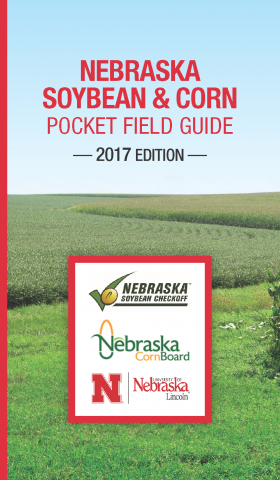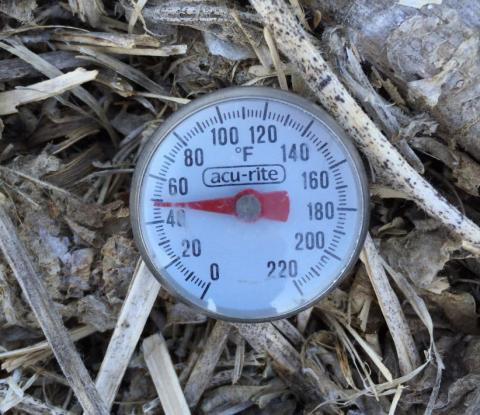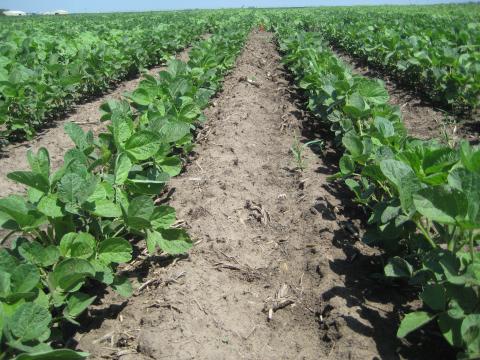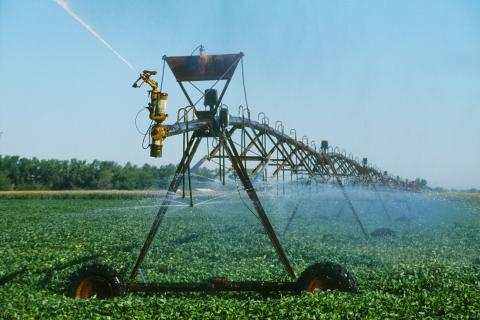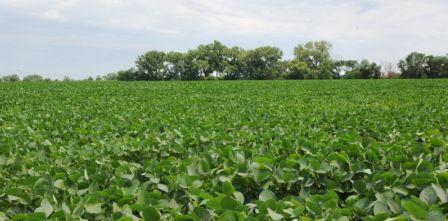New Pocket Field Guide for Nebraska Soybean and Corn Growers
April 28, 2017
Nebraska farmers now have a new field resource to aid in identifying plant and pest problems in their soybean and corn fields. The Nebraska Soybean and Corn Pocket Field Guide provides information and photos to help farmers identify problems they may encounter during the growing season. The 380-page pocket-sized production guide was produced by a team of University of Nebraska researchers and Extension faculty, and funded by the Nebraska Soybean Board (NSB), Nebraska Corn Board (NCB), and the United Soybean Board (USB). Editors were Jim Specht, soybean physiologist/geneticist and University of Nebraska professor emeritus, and Tom Hoegemeyer, corn breeder and UNL adjunct professor of practice.
Considerations for Managing Herbicide-Resistant Weeds in Soybeans: Spring Burndown
April 28, 2017
One of the challenges with spring burndown application is timing. Wet and windy conditions can delay spraying and under these conditions weeds can grow significantly in a few days. Waiting until planting to spray troublesome weeds such as marestail may be too late to achieve adequate control. In addition, waiting until soybean planting limits the available herbicide options since there are relatively few labeled effective burndown chemicals for spraying at this time. The following section identifies key treatment aspects to consider for several resistant varieties in Nebraska.
Timing is Critical with Pre-Emergence Flumioxazin-Based Herbicides in Soybeans
April 26, 2017
Soybean planting has started in Nebraska and it’s time to apply pre-emergence herbicides. Six weeds have evolved resistance to glyphosate in Nebraska. The best way to effectively control resistant and other hard-to-control weeds is by applying residual, pre-emergence herbicides with multiple effective modes of action. Several new herbicides recently registered in soybean are in this category and could be considered.
Above Normal Temps Lead to Jump in Corn Planting Progress
April 25, 2017
With temperatures averaging two to four degrees above normal for the week ending April 23, corn planting was well underway and soybean planting had started in Nebraska, according to USDA’s National Agricultural Statistics Service.
Corn, Soybean Planting Considerations for this Week’s Cold Snap
April 24, 2017
With nighttime lows predicted to drop several nights this week, growers are advised to cautiously assess the potential for germination problems due to imbibitional chilling before planting. Agronomists advise checking soil temperatures in each field the day of planting as well as forecast temperatures for 24 hours (soybeans) or 48 hours (corn) after planting.
Planting Interval of Corn after Previous Year's Soybean Herbicides
April 21, 2017
Corn-soybean is the most common cropping system in eastern Nebraska. While corn growers are getting ready for planting this season, it is important to pay attention to the planting interval of herbicides applied the previous year in soybean. Certain soybean herbicides have relatively longer planting intervals for corn, especially if they are applied post-emergence in soybean. This is particularly important because soybean planting was late last year in much of Nebraska due to May rains. This caused postemergence herbicides to be applied later in the season than they might normally be, making it important that you pay attention to the planting interval.
Planting Soybean after Soybean (Part 2): In-Season Management Considerations
April 13, 2017
In Part 1 of this article, we look at considerations for planting soybean after soybean. In this article, Part 2, we share considerations for in-season management.
Planting Soybean after Soybean (Part 1): Planting Considerations
April 13, 2017
Farmers are increasing their soybean plantings for 2017, which likely means some are shifting to soybeans-after-soybeans. This article looks at what you should be considering at planting time as you consider changing your cropping sequence.
